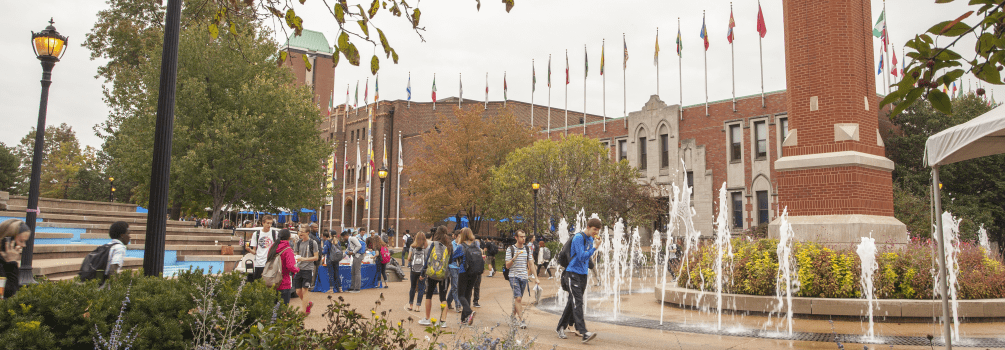Saint Louis University
Over the last fifty years, Saint Louis University has transformed Midtown St. Louis into a thriving educational, medical, entertainment, sports and residential community. Working outward from Midtown, it has also had a significant impact on surrounding neighborhoods.
In 1996, the University adopted the Shaw Neighborhood as the site for its innovative Micah Program. An undergraduate learning community dedicated to having long-term impacts on surrounding neighborhoods, the Program has since grown to involve more than 250 students in studying urban poverty and serving at seventeen sites in Shaw and other neighborhoods around the University
In the same period, the University began working with the Missouri Botanical Garden and others to redevelop a neighborhood in the near South Side now known as Botanical Heights. Originally invested in the community of Tiffany in the late 1970’s, where the University met limited success, the focus on Botanical Heights led to major redevelopment in nearby McRee Town.
In 2009, the University revisited the area with a focus on education, accepting sponsorship of the new and now highly successful charter school, City Garden Montessori near Botanical Heights. By 2017, City Garden will have expanded to include children from pre-kindergarden through eighth grade.
In 2011, the University pushed south, allying with St. Margaret of Scotland Parish and School. Along with the Missouri Botanical Garden, Gateway Greening, and Cardinal Glennon Children’s Medical Center, the University formed the highly successful Community Alliance for Education, which supports sporting programs on campus for over 425 families.
From the Community Alliance for Education came the initiative to create an outreach greenhouse employing aquaponic growing methods to reach out to people living in food and education deserts in Saint Louis. Designed by nine departments at the University, working together on a grant from the Center for Sustainability, the initiative was led by Dr. Donald Stump, director of the Micah Program, who was the University’s representative in the Community Alliance for Education, and by Richard Colignon, Chair of the Department of Sociology and Anthropology.
In early 2014, community leaders in the Alliance took Dr. Stump’s idea and preliminary design documents generated by the Sustainability Grant, and have since grown it into a major project. A site has been located and secured on option. A two-story architectural design has been developed. Papers of incorporation for non-profit organization to manage the facility have been filed in partnership with Saint Louis University.
Along with a formal programmatic and legal relationship with Saint Louis University, The Green House Venture has also formed relationships with the four schools that are to be its primary partners: St. Margaret of Scotland, an archdiocesan Blue Ribbon school; Mullanphy-Botanical Garden School, a public school district Magnet; St. Louis Language Immersion Schools, a public charter school; and Tower Grove Christian, a private Christian school..
Never in St. Louis have four such highly successful, yet differently constituted, schools come together to explore ways to teach children STEM subjects in a facility on the cutting edge of sustainable urban agriculture. The resulting Urban Education Alliance District has the potential to be a model for the nation, bringing together a major university with four elementary schools to develop innovative curricula and experiential educational methods that can then be disseminated to other schools throughout the St. Louis region and beyond.
The greenhouse will also grow produce for use in eight school-lunch programs already supported by SLU’s Department of Nutrition and Dietetics. Also promising as ways to impact childhood obesity and its long-term health effects are collaborations with Cardinal Glennon Children’s Hospital and with CORTEX, the dynamic biomedical incubator of which Saint Louis University is already a member.




